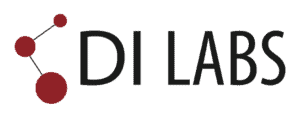How Additive Manufacturing Stepped Up When Disaster Struck
Solutionology Stories Podcast Episode #28 | 29:51 min
Description
A Hurricane, a Crisis, and a Call for Manufacturing Innovation
In October 2024, a major hurricane struck the U.S., leaving destruction in its wake—including the disruption of a critical injection molding supply chain for a top automotive manufacturer. With production at a standstill and losses mounting by the hour, the company turned to Stratasys Direct, one of the world’s largest additive manufacturing service providers, for a solution.
Justin “Bud” Runquist, VP of Sales and Marketing at Stratasys Direct, led the charge in mobilizing an emergency manufacturing response. His team turned to additive manufacturing (AM) at scale, proving that 3D printing is not just for prototyping—it’s a viable production method in crisis situations.
From Concept to Reality in 12 Hours
Faced with an urgent request, Stratasys Direct had to determine if additive manufacturing could meet the scale, quality, and speed required. Within hours, they had parts on a printer. By the end of the day, they had functional components in hand, shipping them overnight for validation.
The automotive manufacturer tested the parts immediately and confirmed their viability. Their next question: How quickly can we scale up production?
A Distributed Manufacturing Network in Action
Stratasys Direct quickly recognized that meeting the demand—500 parts per day, with the first shipment needed within seven days—required a network approach. They reached out to trusted partners, including DI Labs, to expand capacity.
The response from the additive manufacturing community was overwhelmingly positive. Manufacturers across the industry stepped in, demonstrating the power of distributed manufacturing: a collaborative, decentralized approach that allows for rapid scaling.
Key Takeaways: Lessons in Agility and Preparedness
The success of this emergency production effort provides valuable insights for the future of manufacturing:
- Speed Matters: In a crisis, the ability to pivot quickly is essential. Stratasys Direct and its partners had to move from concept to full-scale production in record time.
- Collaboration is Key: No single company could have met the demand alone. Distributed manufacturing allows multiple entities to contribute, ensuring supply chain resilience.
- Quality & Standards Drive Success: Not every supplier could meet the rigorous quality standards required. Establishing industry-wide certification and validation processes will be crucial as AM continues to scale.
- Additive Manufacturing is Production-Ready: Once seen only as a prototyping tool, AM has proven its ability to manufacture end-use parts at scale, providing a flexible alternative to traditional methods.
The Future of Additive Manufacturing: A Tipping Point
As Runquist pointed out during the podcast, additive manufacturing is at a tipping point. While early adopters have long embraced its potential, the challenge now is crossing the gap into mainstream adoption.
Manufacturers must shift their mindset—from using AM as a last resort to integrating it as a primary production method. The industry also needs clearer standards and validation protocols to ensure consistency and trust in AM-produced parts.
Looking Ahead
This story highlights the transformational power of additive manufacturing—not just in emergency response, but in the broader effort to create more resilient and adaptable supply chains.
As companies continue to explore AM, partnerships like the one between Stratasys Direct and DI Labs will be essential in proving its real-world viability. The next five years will be critical in determining how AM fits into large-scale production, but one thing is clear: it’s no longer just for prototyping—it’s a game-changer for manufacturing.
Follow our Solutionology Stories Playlist: https://youtube.com/playlist?list=PLMo39wYkklXud2wHcfBRLQ2_cMjl0B3hQ&si=vKlmB5wjwfYNP6Pp
More about DI Labs: https://dilabs.cc/
More about Stratasys Direct: https://www.stratasys.com/en/stratasy…
Chapters
00:00 Welcome Bud
02:31 Line Down!
11:00 Quality Standards for Distributed Manufacturing
15:21 Pushing Use Cases for Volume Production
25:34 A Tipping Point for Additive Manufacturing


